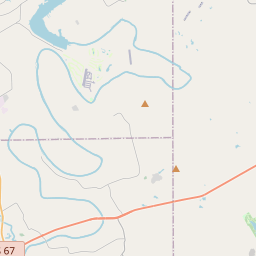John L. and Annie Upshaw Cleveland House
Historical marker location:






John L. and Annie Upshaw Cleveland House
John L. Cleveland was born in Georgia in 1851 to James Monroe and Catherine (Wright) Cleveland. He studied agriculture and business before moving to Midlothian, Texas, to teach and farm. Annie Hamilton Upshaw, daughter of Samuel Crockett and Attelia (Aldridge) Upshaw of Old Washington, Texas, moved with her family to Hillsboro and attended Stuart Female Seminary in Austin. She and Cleveland married in Hillsboro in 1884, and the two settled in Cleburne, where, in 1887, they purchased two lots from B.J. Chambers. The couple began construction on their home in 1892 and moved in the following year.
John and Annie were both instrumental in the formation of the Main Street Methodist Church. John owned the Cleburne cottonseed oil mill, which was destroyed by fire in 1907. He also owned a hardware store and sold cars to Cleburne citizens, although he did not learn to drive until he was 80 years old. He was a member of the Knights of Pythias, the school board and the Democratic Club of Cleburne.
Annie, or Anne, served as president of the Cleburne chapter of Circle of Kings Daughters, headed the local Red Cross canteen during World War I and, in 1925, helped organize the city's parent-teacher associations and the Cleburne Council of Mothers, which later became the City Council. She served as the group's first president. The couple had ten children, six of whom lived to adulthood.
John died in March 1936, and Annie died four months later. The house passed to their children, who sold it in 1941. Subsequent owners maintained the aesthetic of the historic home, which was built in the Queen Anne style with Eastlake details. Interesting features include decorative Fishscale shingling, polychromatic painting, sunburst motifs, a prominent modified keyhole window and spindled friezework.
Recorded Texas Historic Landmark - 2002
As one of the most visible programs of the Texas Historical Commission (THC), historical markers commemorate diverse topics in Texas history, including: the history and architecture of houses, commercial and public buildings, religious congregations, and military sites; events that changed the course of local and state history; and individuals who have made lasting contributions to the state, community organizations, and businesses.
The first domed stadium in the world, the Astrodome, was built in Houston in 1965 and hosted numerous sporting events and concerts over the years.
The establishment of Johnson County can be traced back to 1854 when it was officially organized and named after Middleton Tate Johnson, a Texas Ranger and a Confederate commander during the Civil War. The county quickly began to grow, attracting settlers from nearby areas due to its abundant natural resources and favorable climate for agriculture. Cotton and corn became the primary crops, and the county's economy thrived, aided by the construction of railroads in the late 1800s.
Throughout its history, Johnson County has faced both triumphs and challenges. In the late 1800s, the county was known for its fertile soil and large cotton plantations, which contributed to its economic prosperity. However, like many areas in the South, Johnson County also experienced the hardships of Reconstruction following the Civil War. Additionally, the destructive effects of the Great Depression in the 1930s had a significant impact on the local economy, causing widespread poverty and unemployment.
In recent decades, Johnson County has seen significant growth and development. With an expanding population and a diverse economy, the county has become a hub for industry, commerce, and residential communities. Today, it continues to embrace its rich cultural heritage while adapting to the changing needs of its residents. Johnson County's historical legacy serves as a reminder of the resilience and determination of its people, allowing the county to thrive and face the future with confidence.
Johnson County Timeline
This timeline provides a condensed summary of the historical journey of Johnson County, Texas.
- 1846: Johnson County is established as a county in the state of Texas.
- 1861-1865: Johnson County sends soldiers to fight in the American Civil War.
- 1867: The county experiences economic growth as the Chisholm Trail passes through, bringing cattle drives and trade.
- 1879: The town of Cleburne is established as the county seat.
- 1880s: The arrival of the railroad boosts the local economy and facilitates transportation.
- 1893: The Johnson County Courthouse is constructed in Cleburne, becoming a local landmark.
- 1920s: The county suffers from the Great Depression, causing economic hardships for its residents.
- 1940s: Johnson County contributes to the war effort during World War II, with many residents serving in the military.
- 1950s-1960s: The county experiences population growth and suburbanization.
- 1990s: The opening of the Chisholm Trail Parkway provides improved transportation and connectivity.